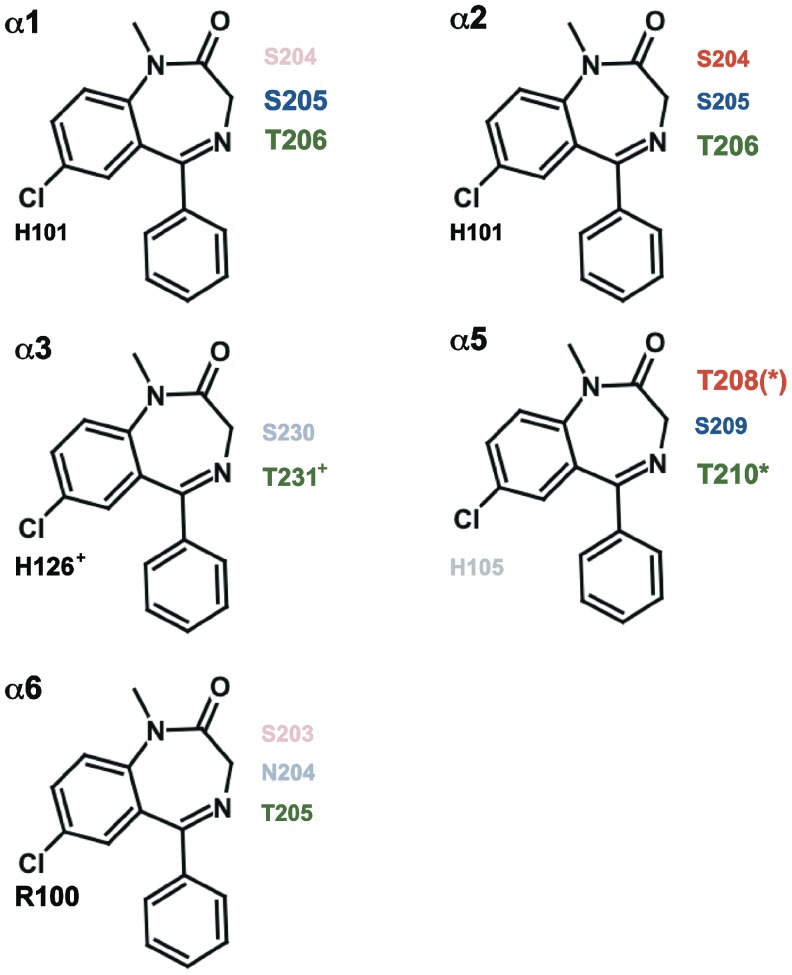Figure 6. Summary.
The results obtained with NCS [33] and the results obtained with 3-NCS described here are summarized. For each receptor isoform αxβ1/2γ2 (x = 1, 2, 3, 5, 6) amino acid residues homologous to 101 in α1 are shown in black, those homologous to 204 are shown in red, those homologous to 205 are shown in blue and those homologous to 206 are shown in green. Residue 101 is located near to the C atom carrying the Cl atom in diazepam, and 204, 205 and 206 are near to C atom adjacent to the keto group. The residues showing covalent reaction are shown in full color and those showing no reaction coloured in reduced saturation. The residues in larger font size react with a high apparent affinity. The residues marked with * and (*) indicate an antagonistic effect and a partial modulatory effect by 3-NCS on the corresponding α5mβ2γ2 receptors, respectively. The residues marked with + indicate that the corresponding α3mβ2γ2 receptors were only investigated at the functional level.

